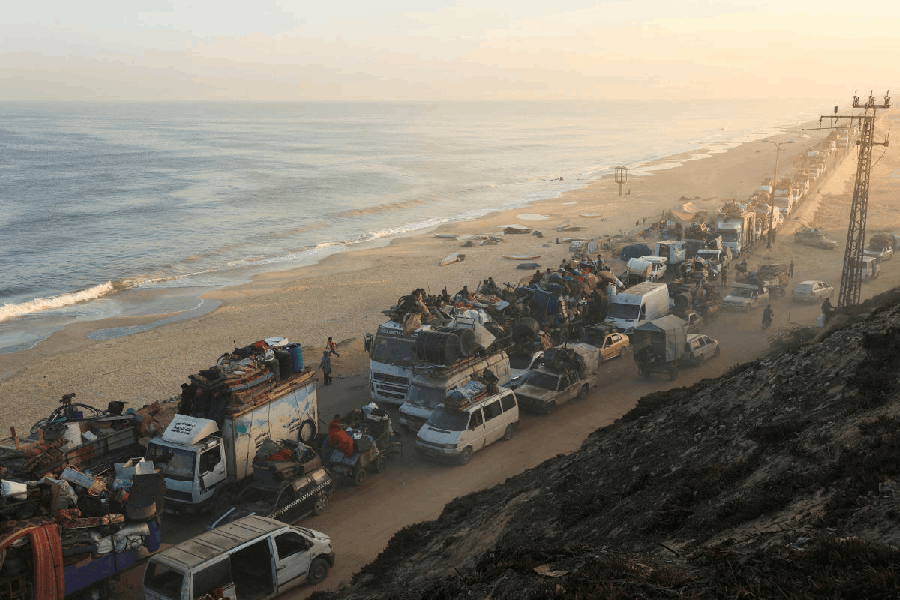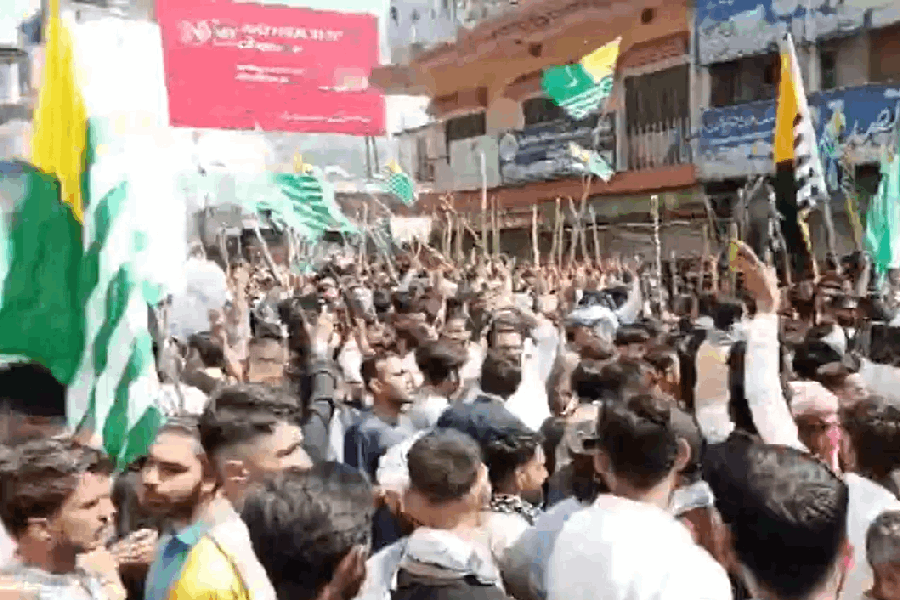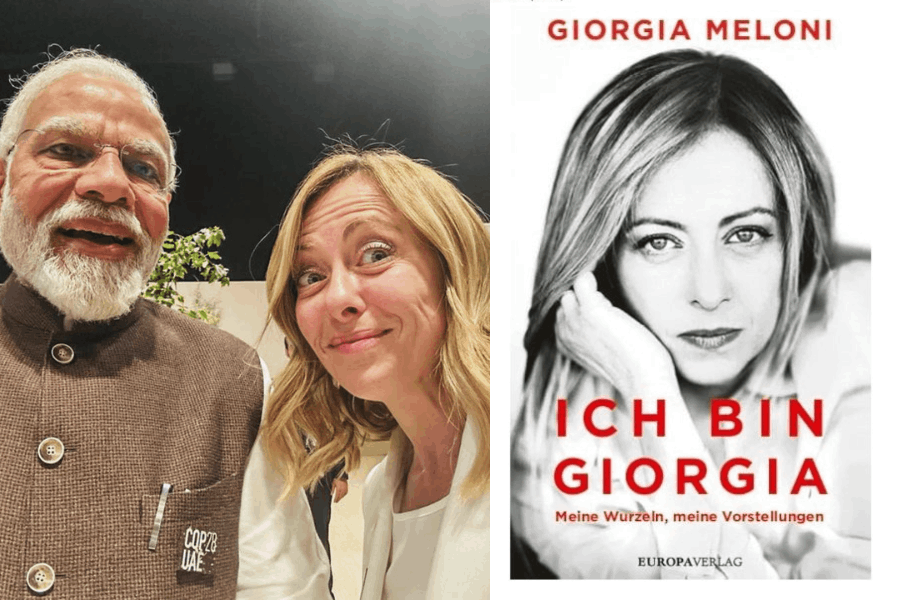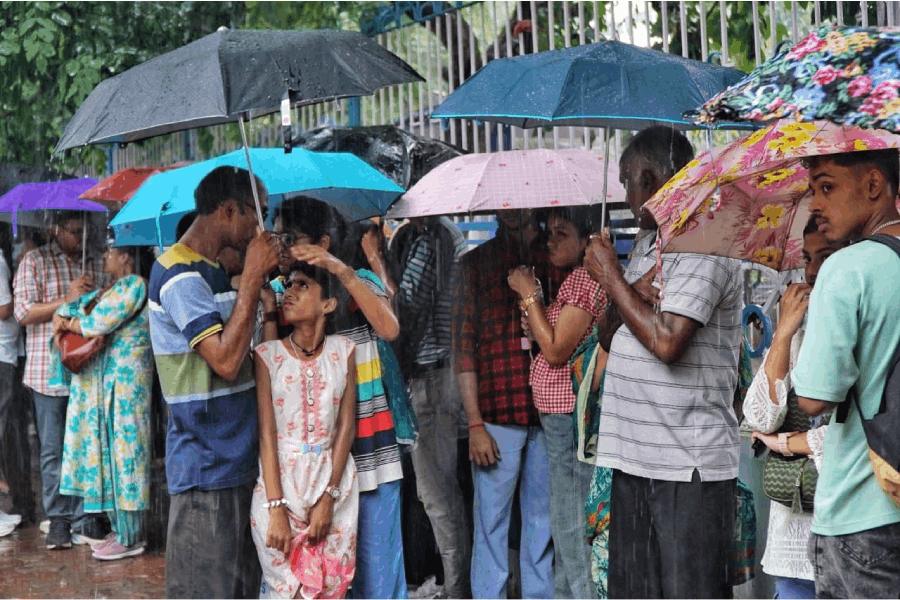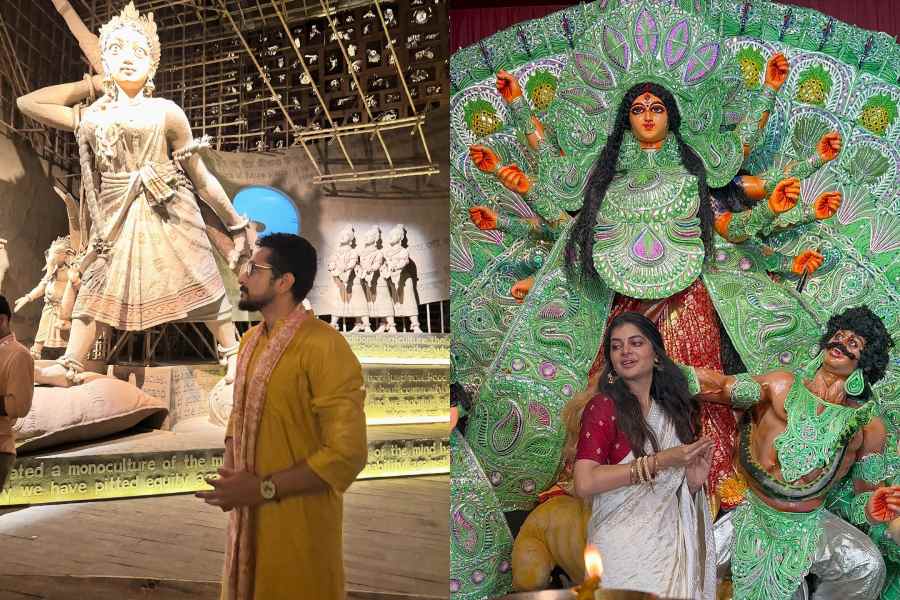|
|
In the introduction to The Second Creature designed by Satyajit Ray and published in 1949 by Calcutta’s Signet Press (Ray was then a visual designer at the press), the legendary photographer, Sunil Janah, writes that all his images of “smiling handsome women” were taken “during four years of almost continuous wandering throughout India”. Unable to resist, as he says, “a pretty girl”, he “photographed her because she represents the youth, charm and vitality” not quite destroyed in a people “and which appears as irrepressibly as the hunger I have gone to portray”. Janah was, of course, writing about the Bengal Famine of 1943 when more than three million people had died. He had been enlisted for the task of recording the famine-stricken countryside by P.C. Joshi, the general secretary of the Communist Party of India. His searing visuals that accompanied Joshi’s reportage and were published widely in the communist press in India and abroad changed Janah’s world view irrevocably.
Janah had not come to emotive photography as an ingénue; at his parents’ home there were enough books on the subject including one with Ansel Adams’s brilliant black-and-white imagery — and by his late teens, he was taking photographs. Educated at St. Xavier’s School and Presidency College — appropriate for a bhadralok’s son (his father was a Calcutta-based lawyer) — Janah met Joshi while he was studying for an MA in English literature and for a degree in law. As he was by then a member of the Communist Party-led Students Federation, to join Joshi did not pose much of a dilemma. In fact, the thought must have been positively invigorating. Yet, once in the field, he felt deeply moved by the suffering and injustice he was to record. Many years later, in 1998, the 80-year-old, whose range and expanse of work mark him as one of the foremost documentary photographers of his times, said in an interview with V.K. Ramachandran of the Frontline magazine that for an activist at heart, “it was very distressing because I felt like doing things other than taking photographs.... People were starving and dying and I was holding a camera to their faces, intruding into their suffering and grief”.
Questions of privacy, truthful or correct representations and subjectivity of the camera become issues that are amplified in times of disaster and of war. Even though when Janah was photographing, disaster photography had not acquired the salience that it has today, he went through considerable soul-searching during his early days with the camera amidst the desolate countryside of Bengal and Orissa; in a recent illustrated talk, the photographer-cum-artist, Ram Rahman, curator of the 1998 Sunil Janah retrospective in New York, drew attention to a particularly macabre shot of skeletons in a deserted land. Janah, he said, had noted that bodies were left to rot as there was not enough money to burn the dead. His deeply artistic eye is evident even when the subject is horrific: in a particularly lyrical photograph, a young mother clutches her infant — and a bowl. There is a faraway, almost dreamy, look in her eyes, leading the viewer to imagine that it is a mother-and-child image from a ‘happy’ space and time, that is, until one sees the child’s vacant look and distended stomach.
A couple of years after, Janah was asked by the photographer for Life magazine, Margaret Bourke-White, to join her on an assignment of visually recording the traumatic days before as well as those after the exchange of populations that followed the Partition of India. A phase of intense work on India’s political future followed and Janah’s repertoire ranges from formal portraits to charming images of Sarojini Naidu looking up and smiling quizzically at Mahatma Gandhi, and perhaps the last known photograph of Mohammed Ali Jinnah and the Mahatma after the failure of the Bombay talks in 1944. Janah’s oeuvre, however, extended well beyond pain, suffering, political meetings and portraiture of the known and respected. If he agonized over the shot of a half-dead young child begging for rice gruel, he revelled equally in photographing girls and women from all parts of the country as he believed the Indian girl to be “bright enough, beautiful and sensual enough to inspire her men to live”. As he wrote, many of these photographs were taken while on the famine route.
Janah’s fascination with the female form resulted in deeply evocative photographs, their well-thought out composition if not judicious cropping subtly encouraging reverie in the viewer. In The Second Creature (for those who might quail at the gendered myopia of his title have only to remember that Simone de Beauvoir wrote The Second Sex), he refines the portrait format to suit his subject; perhaps the most striking photographs in this series are the ones of young women from Malabar; at the time being bare breasted was quite the norm and the photographer took advantage of this tradition in his carefully angled shots. Some were initially shy while another who “fully felt the importance of her beauty, standing in the middle of an admiring circle with a man from the city apparently come all the many miles to immortalize her” obviously complied with instructions on how to pose so as to show off her youthful body. The result is a small cache of delicate images of nubile beauty at its best. Despite a certain limpid sensuality, there is never even a hint of obscenity, only a whiff of innocent pleasure of girls and women being at ease with their bodies.
Some years later, Janah further honed his interest in photographing women by becoming one of the first photographers of dance in India. This cropped image of the beautiful and talented classical dancer, Indrani Rahman, who popularized Odissi, is indicative of a professional confidence that allowed him an unconventional presentation of a leading danseuse of the time. In focusing on the dancer’s mudra as she reaches down to her feet, one’s attention moves on to the swinging of her hair ornament and her jewellery, and to her upturned toes. The photograph encourages the viewer to think of certain things that do not normally come to mind while witnessing a performance or even looking at a usual repertoire of photographs of dance. We reflect on the dancer as a person with everyday concerns; was she worried that her jewellery would be out of place when she raised her head, that her heavy plait might slip forward? Or were such mundane thoughts far from the mind of someone so completely absorbed in her art? And indeed, are such ruminations only those of an untutored viewer, ones that would hardly have crossed the mind of the photographer who perhaps only wanted us to observe the classic rendering of hand and feet positions, the half smile on that charming face?
In the 1960s, Janah’s genius in capturing the essence of dance was exemplified in his collaboration with the biographer, Ashoke Chatterjee, in the production of Dances of the Golden Hall, a meticulous photo biography of Shanta Rao, who, apart from her virtuosity in Bharata Natyam and Mohiniattam, was the first woman to perform Kathakali, the male-dominated dance form from Kerala. Photographs, carefully arranged and annotated in the book, were taken in Madras, Bangalore and against the backdrop of the temples of Madurai, Belur and Halebid.
By the time Janah left the country in 1978 to make London his home, he had become an indefatigable traveller with an ever-growing portfolio that included images of two different Indias — of its tribal people, the Santhals, Murias, Gadavas, Garos, Mishmis and Nagas, and of icons of a newly industrializing nation: coal mines, dams and iron-and-steel plants. He revelled in the “gay company” of Mikir tribals — but skipped breakfast at the home of Sheikh Abdullah as the other guest was Jawaharlal Nehru — “and I was terribly shy of being at the same breakfast table as him”. Both had travelled many miles since that morning in Anand Bhawan when a 17-year old Janah had photographed a pensive Jawaharlal Nehru standing before a pillar. An archetypal social commentator who spoke through his images, Janah’s body of work will remain a foremost “epic visual document” (Ram Rahman) of a nation in the making, at times cruel and scathing, and at others, poignant, compellingly emotive and poetic.






